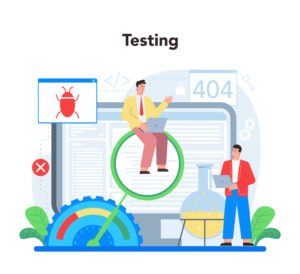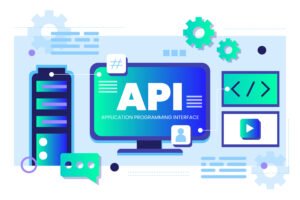APIs are the glue of the digital world—connecting apps, platforms, and systems behind the scenes. But here’s the catch: when APIs fail, everything else can come crashing down. That’s why API testing is a critical part of modern software delivery.
In 2025, API test automation has become one of the most important practices for QA teams and DevOps engineers. Instead of running repetitive manual tests, teams can now rely on automated frameworks to validate APIs faster, more accurately, and at scale.
If you’re new to the concept, this beginner’s guide will walk you through what API test automation is, why it matters, and how to get started.

Why API Test Automation Matters
APIs power everything—from mobile banking apps to healthcare platforms, CRMs, and even IoT devices. Without strong testing, a faulty API can:
Break customer-facing applications
Expose security vulnerabilities
Slow down release cycles
Damage brand reputation
Manual testing simply can’t keep up with today’s rapid CI/CD pipelines and frequent releases. That’s where automation steps in.
What is API Test Automation?
API test automation is the process of using specialized tools and frameworks to automatically validate the behavior, performance, and security of APIs.
Instead of writing test scripts for every request/response manually, automation allows teams to:
Send API calls (GET, POST, PUT, DELETE)
Validate responses against expected outcomes
Check error handling, performance, and security controls
Run tests repeatedly across environments (Dev → Test → Staging → Production)
In simple terms: It ensures APIs do what they’re supposed to—reliably, securely, and at speed.
Types of API Tests You Can Automate
- Functional Testing – Does the API return the correct response?
- Contract Testing – Does the API adhere to its schema/spec?
- Performance Testing – Can it handle load, stress, and spikes?
- Security Testing – Is the API protected against unauthorized access?
- Regression Testing – Do existing APIs still work after new updates?
How API Test Automation Works (Step-by-Step)
Import API Specs – Use Swagger/OpenAPI/Postman collections as a starting point.
Design Test Scenarios – Define what you want to validate (status codes, payloads, performance).
Build Automated Tests – Use frameworks or codeless platforms to create tests.
Run Tests Across Environments – Ensure consistency from Dev to Production.
Integrate with CI/CD Pipelines – Trigger tests automatically with every code push.
Analyze Reports – Review dashboards and logs for quick feedback.
Best Practices for Beginners
Start small: Begin with critical endpoints before scaling.
Use codeless tools: Reduce dependency on developers for test creation.
Automate contract validation: Catch mismatches early.
Integrate early: Adopt a shift-left approach in development.
Keep test data stable: Avoid flaky results by managing test data properly.
Final Thoughts
API test automation is no longer a “nice to have”—it’s a must-have for modern development teams. By automating API validations, you save time, reduce human error, and enable faster, more reliable releases.
At Total Shift Left, we’ve built a next-gen API automation platform that makes this journey even easier with:
AI-powered test generation from endpoints
Codeless test creation for faster adoption
Environment-aware execution from Dev to Prod
Advanced dashboards for actionable insights
Ready to get started? Book a demo today and see how API automation can transform your QA process.
At TotalShiftLeft.ai, we help teams adopt API test automation seamlessly with both code-based and codeless solutions. Our platform provides scalable automation, CI/CD integration, and advanced reporting to make your business case stronger than ever.











